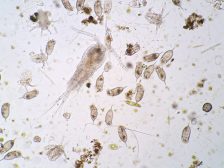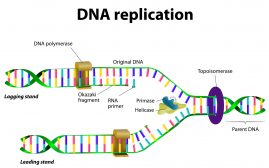Definition
noun, plural: minisatellites
(molecular biology) A tandem repeat ranging in length from 10 to 60 base pairs, repeated typically five to fifty times
Supplement
Tandem repeats are repeated nucleotide sequences in which the copies lie adjacent to each other. It may be repetition(s) of one or more nucleotides. For example, CG CG CG CG CG is a tandem repeat wherein the sequence CG is repeated five times. Examples of tandem repeats are satellite DNA, microsatellite, and minisatellite.
Minisatellite repeats are tandem arrays of moderately repetitive DNA sequences. The typical length is about ten to 60 base pairs repeated about five to fifty times. In humans, minisatellites are found in the telomeres and centromeres of the chromosomes. Some of them are hypermutable and as such are regarded as the most unstable region in the genome. Minisatellites are essential to understanding polymorphism and DNA fingerprinting.
The term minisatellite is sometimes used interchangeably with variable number of tandem repeat (VNTR). However, VNTR pertains not just to minisatellites but also to microsatellites. A microsatellite is similar to a minisatellite in being a stretch of DNA consisting of tandem repeats. However, a microsatellite is relatively shorter than a minisatellite.
Also called:
- ninisatellite repeats
See also:







